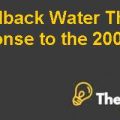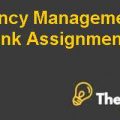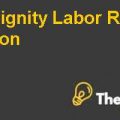
Introduction to Business Situation
Hutchison Whampoa was established in the year 1977 through a merger between the Whampoa Dock Company Limited and the Hutchison International Limited Company. Both the firms had played a significant role in the early development of Hong Kong. Hutchison Whampoa had become listed in the year 1978. Cheung Kong holdings were one of the companies that had bought the highest percentage of the shares of the newly listed company in order to become the controlling shareholder of the company.
Since then the company had been outperforming its competitors and the business portfolio of the company has been diversified into many areas including the infrastructure, energy, telecommunications, manufacturing, retail, ports, property holding and property development and many other investments. Most of the firms in Hong Kong relied on the internal source of financing to fund the business operations and fuel the future growth of the companies.
The companies tried to minimize the use of debt financing and most the companies were against the equity financing since it diluted the control position of the owners of the company. Nevertheless, most of the companies required excessive funds to fund their growing needs for expansion and also because of many potential opportunities due to which many companies had stated to show increasing interest in the American markets and the highly liquid European markets. Major companies in Hong Kong were also being now rated by Standard and Poor and Moody’s.
Hutchison Whampoa also had huge capital needs to fund the future investments that had been identified by the company. Historically, the company had been financed with the help of the short to medium term financing, internal cash generation and the cash on hand of the company. However, now the situation had arrived when the long term nature of the projects made the short term credit agreements not feasible for financing. Therefore, now the management of Hutchison Whampoa will have to seek out all the possible sources of the financing with their relative impact upon the cost of capital, taxation issues, pros and cons of each option and the impact upon the value of the firm.
Problem Diagnosis
The management of Hutchison Whampoa was seeking the financing for its long term capital needs and it was also sorting out specific financing strategies. The current worth of the Hong Kong based merger was HK$ 35 billion and the company had identified a range of opportunities in the different geographies around the world in different business sectors. Most of the peers of the company and the company itself had relied upon internal sources such as the cash on hand and short to medium term bank financing to fund the financing needs of the company.
However, now the situation was different for Hutchison Whampoa and the management of the company had sought many long term investments which could not be funded with short term credit agreements, therefore, the management of the company was considering a range of financing options with the most attractive rates in the market. Another reason for looking for long term sources of financing was that the management of the company was planning to extend the investor base of the company and diversify it more. The company was considering a number of options such as syndication, equity, bonds such as the Yankee Bond Offering. Currently, the company had also approached to Standard and Poor’s and Moody’s to get the bond rating for the company.
Analysis
The analysis for the future capital structure decision of Hutchison Whampoa has been performed by evaluating and analyzing a number of key issues facing the firm and highlighting the most important facts of the problem. Each of the issues has been analyzed below as follows.
Assessment of Current Capital Structure
In order to assess the current capital structure of the company first of all the total composition of the debt for the company needs to be evaluated. If we look at the data for the current year 1995, then it could be seen that the current liabilities on the balance sheet of the company are around HK$ 5329 million and the long term liabilities are HK$ 26174 million. The total interest that has been paid by the company on financing is around HK$ 2808 million according to the cash flow statement of the company as shown in exhibit 3. Based on this, the average interest rate for the company is 9.7% excluding the 7% convertible bonds............
This is just a sample partial case solution. Please place the order on the website to order your own originally done case solution.













